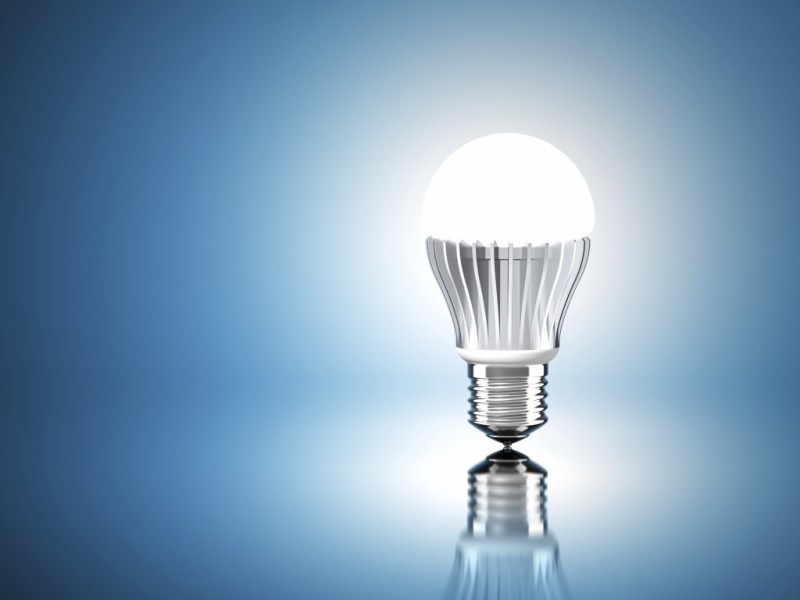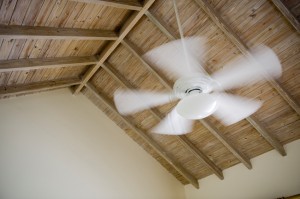The Only LED Lighting Guide You Will Ever Need
The world of technology is forever changing, and that goes without saying. Whether it’s a thermostat that you can program with your phone, a car that can park itself, or a light bulb that turns off when you’re not in the office; innovators are finding new and improved ways to help you save time and money.
As you may know, the world of lighting systems is changing as well, with the influx of LED technology. You may not have noticed, but LED lighting is incorporated in every part of your life. If you drive your car to work every morning, wait at a traffic light, use your smart phone, go to the doctor’s office, or use your laptop at work; you are more influenced by LED’s than you thought.
I am sure you have seen LED lights in modern appliances, street lights, and commercial signs, but have you ever wondered exactly how they work? If you plan on making improvements or renovations to your building space, we have created this LED guide to help you make an educated buying decision. We have broken down an LED light bulb into three components: Optical, Electrical, and Thermal.

LED Light Bulbs: Do LEDs Generate Heat?
Unlike traditional lightbulbs, that tend to emit large amounts of heat, LEDs have thermal components that not only make them more energy-efficient, but safer as well. When a light bulb is electrically charged, it generally emits a certain amount of heat. Traditional bulbs tend to emit a higher amount of heat than the average LED light bulb. Innovators of LED technology understand this occurrence, and have come up with a solution to high heat emissions. They are called fins
What are Fins?
Fins are basically the outer shell of the LED lightbulb that allows for heat to be dispersed from the bulb. Incandescent lightbulbs don’t have this feature, therefore causing most of the heat that is generated to remain inside the lightbulb. Not only do LED lightbulbs generate less heat than traditional lightbulbs, they use less power as well.
Did you know that…
Any product when electrically charged, will generate a certain amount of heat. However, innovators of LED technology have incorporated heat dispersion techniques to reduce those heat emissions. They are called fins.
What are Fins?
Fins are an outer shell, usually made of aluminum or ceramic, that allow for heat dispersion. Manufacturers often use a high number of thin fins to address the need for heat dispersion.
How much heat is generated?
Did you know that about 90% of the energy from incandescent lights bulbs is wasted as heat. Not only does LED light bulbs generate less heat, but they use less power to do so.

LED lighting – constraints and recommendations
In order to understand the impact that LED technologies will have on existing electrical networks, it is important to analyze the behavior of all key elements in the network. Below is a list of potential risks to consider and also some recommendations for mitigating those risks
The risk related to circuit breaker selection
The choice of circuit-breaker characteristics depends on the nature of the load powered. The rating depends on the cross section of the cables to be protected and the curves are chosen according to the loads’ inrush current. When switching on LED luminaires, very significant inrush currents occur up to 250 times the nominal current according the type of driver for a very short time (< 1 msec).
Normative curves according to the “standard” (curves as defined in NF EN 60898 and NF EN 60947-2) used for circuit-breaker certifications (which characterize fault currents of a duration exceeding 10 ms) give the circuit breakers’ tripping threshold for currents maintained for 10 ms or more. For transient currents of duration less than 10 ms, no normalized curve exists. The peak value of the total current at switching on depends on the energizing time, the number of luminaires forming the lighting circuit, and the short-circuit power and architecture of the network.
Recommendations
In order to address this risk an appropriate choice of the circuit breaker (rating, curve) must be done during the design phase of installation, according to the recommendations given by the manufacturer. Another option, very useful in the case of replacing conventional lighting by LED lighting on existing large installation, is to implement a remote control including zero crossing function in place of standard device. That will limit the total inrush current in the order of 4 to 5.
The risk relating to Earth leakage protection device
The leakage current is at maximum for switching on at the voltage peak. The frequency of this transient current is high (about 100 kHz). For switching on at zero voltage, the leakage current is practically zero.

What are LED Light Bulbs?
In addition to their electrical and thermal properties, LED’s also have optical components that make them significantly different than traditional lighting. In terms of performance, LED lights are considered the superior form of lighting based on these four major indicators
Brightness & Efficiency
This is directly related to the amount of light LED’s emit. The amount of light they emit is dependent on the wattage, or power, they require to function.
Color Temperature
LED’s have three different color temperatures. Warm White, Daylight White, and Natural White or Cool White.
Lifespan
You can use the same LED light bulb for up to 50,000 hours. That is equivalent to 30 years, if used regularly, like at home. Commercial usage can average about 20,000 hours, which is still a very large margin to its fluorescent counterpart.
Light Distribution
LED’s are omni-directional, which means that their light output has a wider beam angle. This function makes LED light bulbs far more efficient than traditional bulbs.

LED LIGHTING
A SMALL CHANGE THAT ADDS UP TO A BIG DIFFERENCE
LED light bulbs use up to 85% less electricity than traditional incandescent or halogen bulbs and can last 15 times longer. They cost more upfront – but the long-term savings are worth it.
Wide range of looks and styles
Most bulbs cost less than $10, some just $3 or less
Can save $100-$300 in running costs over the life of the bulb
Good quality lighting
Instant brightness
THERE’S AN LED FOR EVERY ROOM IN THE HOUSE
LEDs come in different types including standard light bulbs, spotlights, candles and recessed downlights. You can choose dimmable or non-dimmable bulbs. Some can change their light colour or brightness even without a dimmer switch.
BASE
For standard bulbs, check if you need a bayonet or screw fitting. To replace halogen spotlights, check if you need a low-voltage (12 V) MR16 (also called GU5.3) bulb with two sharp pins, or a mains-voltage (240 V) GU10 bulb with two studs.
BRIGHTNESS
LED packaging shows light output in lumens, usually with the equivalent wattage of an incandescent bulb. Chances are the LED will actually appear brighter.
COLOUR
Warm white is more comfortable in homes. Cool white works best where contrast is important, such as workshops and garages.
POINTS TO WATCH
LEDs shouldn’t be used in enclosed fixtures where the bulb is fully encased in plastic or glass, such as some porch lights. LEDs need good ventilation for a long life – if they get too hot, they may fail.
For recessed downlights, it’s best to replace the whole fitting rather than just the bulb.
Hold onto your receipt. With LEDs costing a bit more to buy, keep your receipts in case you happen to buy a dud.

